



Ολοι οι Ελληνες πατριωτες επιλεγουν το Ελληνικο κοινωνικο δικτυο https://Hellasbook.gr ελα μαζι μας γιατι ειναι λογικο πια να μην ειμαστε στους ξενους!!
Πλήρης Τεχνική Ανάλυση στήν RFID ” Κάρτα τού Πολίτη”. Βίντεο
Ολοι οι Ελληνες πατριωτες επιλεγουν το Ελληνικο κοινωνικο δικτυο https://Hellasbook.gr ελα μαζι μας γιατι ειναι λογικο πια να μην ειμαστε στους ξενους!!
Άς παρουμε μία πρώτη ιδέα τού τρόπου ανάγνωσης τής RFID Κάρτας τού Πολίτη, μέ χρήση τού RFID – Reader( Άναγνωστης) ISO 14443.
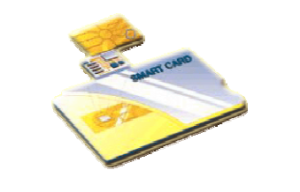 Το ολοκληρωμένο κύκλωμα (microchip) περιέχει τις επαφές εισόδου-εξόδου και μπορεί να περιέχει μόνο μνήμη (memory) ή καιμικροεπεξεργαστή (microprocessor). Το ολοκληρωμένο κύκλωμα μπορεί να παρέχει μία ασφαλή δομήπολλαπλών επιπέδων και να επιτρέπει ιεραρχημένη πρόσβαση, καθιστώντας δύσκολη τηνπρόσβαση στα στοιχεία και την παραποίηση αυτών, να υπολογίζει κρυπτογραφικές συναρτήσεις (cryptographic functions) και να αντιλαμβάνεται άμεσα προσπάθειες πρόσβασης, οι οποίες δεν είναι έγκυρες όπως για παράδειμα το κλείδωμα της κάρτας SIM σε περίπτωση εισαγωγής λανθασμένου PIN περισσότερες από τρεις –συνήθως-φορές.
Το ολοκληρωμένο κύκλωμα (microchip) περιέχει τις επαφές εισόδου-εξόδου και μπορεί να περιέχει μόνο μνήμη (memory) ή καιμικροεπεξεργαστή (microprocessor). Το ολοκληρωμένο κύκλωμα μπορεί να παρέχει μία ασφαλή δομήπολλαπλών επιπέδων και να επιτρέπει ιεραρχημένη πρόσβαση, καθιστώντας δύσκολη τηνπρόσβαση στα στοιχεία και την παραποίηση αυτών, να υπολογίζει κρυπτογραφικές συναρτήσεις (cryptographic functions) και να αντιλαμβάνεται άμεσα προσπάθειες πρόσβασης, οι οποίες δεν είναι έγκυρες όπως για παράδειμα το κλείδωμα της κάρτας SIM σε περίπτωση εισαγωγής λανθασμένου PIN περισσότερες από τρεις –συνήθως-φορές.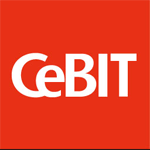 Ή Γερμανική ‘Εταιρία Bundesdruckerei παρουσιάζει τήν Ευρωπαική ‘Ηλεκτρονική ID Κάρτα(European electronic ID card) – Ευρωπαική Κάρτα τού Πολίτη (European Citizen Card, ECC). ‘Η παρουσίαση έγινε στά πλαίσια τών ‘εγκαινίων στό Ανόβερο τής CeBIT (CEntrum der Βόro- und Ιnformationsτechnik = Κέντρο του γραφείου και της τεχνολογίας πληροφοριών)ITC (Ιnstrumental TransCommunication = Έργαστηριακή Άμφίδρομη Έπικοινωνία), τής μεγαλύτερης διεθνούς έκθεσης προϊόντων υψηλής τεχνολογίας. , όπου συμμετείχαν συνολικά 6.059 εκθέτες από 7 7 χώρες και η οποία ήταν ανοικτή στο κοινό έως τις 21 Μαρτίου. Στήν έκθεση παρουσιάστηκαν οί νέες γερμανικές High-Tech κάρτες ταυτότητας, μέ τίς όποιες έφοδιάζονται όλοι οί Γερμανοί Πολίτες από τήν 1η Νοεμβρίου 2010.
Ή Γερμανική ‘Εταιρία Bundesdruckerei παρουσιάζει τήν Ευρωπαική ‘Ηλεκτρονική ID Κάρτα(European electronic ID card) – Ευρωπαική Κάρτα τού Πολίτη (European Citizen Card, ECC). ‘Η παρουσίαση έγινε στά πλαίσια τών ‘εγκαινίων στό Ανόβερο τής CeBIT (CEntrum der Βόro- und Ιnformationsτechnik = Κέντρο του γραφείου και της τεχνολογίας πληροφοριών)ITC (Ιnstrumental TransCommunication = Έργαστηριακή Άμφίδρομη Έπικοινωνία), τής μεγαλύτερης διεθνούς έκθεσης προϊόντων υψηλής τεχνολογίας. , όπου συμμετείχαν συνολικά 6.059 εκθέτες από 7 7 χώρες και η οποία ήταν ανοικτή στο κοινό έως τις 21 Μαρτίου. Στήν έκθεση παρουσιάστηκαν οί νέες γερμανικές High-Tech κάρτες ταυτότητας, μέ τίς όποιες έφοδιάζονται όλοι οί Γερμανοί Πολίτες από τήν 1η Νοεμβρίου 2010.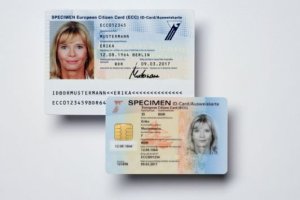 Στήν έναρκτήρια ημέρα τής διεθνούς έκθεσης CeBIT στό Άνόβερο,ή έταιρία Bundesdruckerei παρουσιάζει τή νέα γενία τών άνθεκτικών στήν παραποίηση ύψηλής άσφάλειας καρτών, βασισμένων σέ υλικό από πολυάνθρακα (polycarbonate – PC), πού λέγεται “Innosec Fusion”. Διάφορες Εύρωπαικές χώρες συμπεριλαμβανομένης καί τής Γερμανίας, προγραμματίζουν νά εισάγουν τίς νέες ήλεκτρονικές κάρτες ταύτοτητες (ID), μέ ένα ένσωματωμένο Chip, στό άμεσο μέλλον.
Στήν έναρκτήρια ημέρα τής διεθνούς έκθεσης CeBIT στό Άνόβερο,ή έταιρία Bundesdruckerei παρουσιάζει τή νέα γενία τών άνθεκτικών στήν παραποίηση ύψηλής άσφάλειας καρτών, βασισμένων σέ υλικό από πολυάνθρακα (polycarbonate – PC), πού λέγεται “Innosec Fusion”. Διάφορες Εύρωπαικές χώρες συμπεριλαμβανομένης καί τής Γερμανίας, προγραμματίζουν νά εισάγουν τίς νέες ήλεκτρονικές κάρτες ταύτοτητες (ID), μέ ένα ένσωματωμένο Chip, στό άμεσο μέλλον.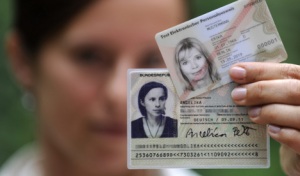 ‘Ο Γερμανός Ύπουργός Έσωτερικών έπιβεβαίωσε ότι, οί νέες ταυτότητες – κάρτες πού περιέχουν Chip ραδιοσυχνότητας (RFID), θά αρχίσουν νά δίνονται άπό 1ης Νοεμβρίου τού 2010.!!
‘Ο Γερμανός Ύπουργός Έσωτερικών έπιβεβαίωσε ότι, οί νέες ταυτότητες – κάρτες πού περιέχουν Chip ραδιοσυχνότητας (RFID), θά αρχίσουν νά δίνονται άπό 1ης Νοεμβρίου τού 2010.!!‘Η Έταιρία πού είναι υπεύθυνη γία τήν Κατασκευή τών Καρτών στήν Γερμανία, ή Bundesdruckerei , μάς δίνει στήν ίστοσελίδα της τά ακόλουθα στοιχεία γιά την Κάρτα RFID.
2. Security Documents Electronic office ID card Modernising Germany’s administration is one of the paramount infrastructure challenges of recent years and will remain so in the years to come. The measures designed to optimise administrative procedures have already been launched on a broad basis and are now to be pushed further ahead. To this effect, the Federal Ministry of the Interior commissioned Bundesdruckerei GmbH in co-operation with the Federal Office for Information Security and the German Federal Criminal Police Office to develop and produce office ID cards with enhanced security features for the staff at all federal authorities. The Federal Armed Forces has also adopted this approach.
Vast experience and comprehensive results formed the foundation of the planning process:
In a first pilot project over a 7-month period, a preliminary version of the electronic office ID card was successfully tested from November 2001 to June 2002 by a total of 100 employees at the Federal Ministry of the Interior and at the Federal Office for Information Security under the leadership of Bundesdruckerei GmbH.
In addition to this, Bundesdruckerei successfully conducted a pilot project titled “Personal key card for the Federal Armed Forces” (May 2003 – October 2005) for the Federal Office for Information Management and Information Technology of the German Armed Forces. 764 cards were issued to 633 participants in the pilot phase at 56 locations and successfully tested.
The new electronic office ID card uses state-of-the-art hybrid card technology in order to combine the functionalities of contactless memory chips with those of contact-based processor chips, making it possible for the first time to integrate numerous additional electronic mechanisms into the conventional ID card, thereby implementing a multi-functional security concept.
|
New ID card
This card can do everything the old ID card could – and much more.As a handy document in credit-card format, the new ID card will continue to be used as so-called photo ID. But for those citizens who wish to make use of its additional functions, transactions on the Internet are set to become more convenient and secure. That’s because the information printed on the ID card is also digitally stored on the chip integrated into the card. For the first time ever, the holder can use the new ID card to prove his identity on the Internet. At the same time, however, he continues to have full control over the data. Apart from the online ID function, the holder of the new ID card can also elect to use the qualified electronic signature (QES). When it comes to the sovereign ID function, citizens can choose whether or not to have their fingerprints stored on the chip in the card. This establishes an even stronger link between the document and its holder.
- The company produces the new ID card, one of the most secure ID documents in the world.
- It issues authorisation certificates for online service providers.
- The company operates its own eID Service at its high-security computer centres for the authentication of online service providers.
4.Bundesdruckerei and Gothaer Versicherungen offer online function for the new German ID card
Security chip
6.New ID card
|
| 1) How to change from the old ID card to the new one? The new Law on Identification Cards came into effect on 1 November 2010. Since then, citizens can apply for the new document only. All the old ID cards will continue to be valid until they reach their expiry date. However, citizens can apply for a new ID card at any time.2) Do other countries already have similar documents? Yes, and these documents are becoming increasingly more widespread throughout the world. In the European Union, for instance, citizens in Belgium, Estonia, Finland, Italy, Austria, Portugal and Spain already have electronic ID cards. However, these cards, which are also referred to as citizen cards, are rooted in other technical infrastructures and therefore cannot be fully compared to the German system. 3) What does the new ID card cost?
Pursuant to the Federal Ministry of the Interior’s current fee ordinance, the new ID card costs ?28.80. A reduction is available for applicants under the age of 24: for a first-time application, they pay a reduced fee of ?22.80. 4) How long is the new ID card valid?
The new ID card is valid for ten years for document holders over the age of 24. The period of validity for younger document holders is six years. 5) Why is there a chip in the new ID card?
The chip is where the personal information, such as name, address and date of birth, is digitally stored and the document holder can make this information available for the online ID function. The additionally stored biometric data of the facial image (mandatory) and the fingerprints (voluntary) ensure that the document cannot be forged and guarantee that it can be used as a valid travel document in the Schengen territory. 6) Can the ID card holder check the data stored on the chip?
Yes. In order to warrant complete data transparency for each and every citizen, all ID card offices have been supplied with reading devices that have been certified by the German Federal Office for Information Security (BSI). Agency staff can use these modules to display all of the personal data stored on the chip, including the digital passport photo and the fingerprints, if stored. 7) Why does the user need a PIN?
In order to use the online ID function, citizens can rely on their six-digit PIN (personal identification number) to release the document data for transmission to authorised service providers, for instance, for online shopping. Nothing happens the first time. If entered a second time, the card holder is requested to enter his six-digit access number which is visible on the front of the document. If the wrong PIN is entered three times, the PIN is disabled. In this case, the user can reset the incorrect-use counter by entering his PUK. This number can be used no more than ten times. After this, the citizen can no longer reactivate the PIN himself. Instead, the card holder must go to the ID card office where he can have a new PIN set. This is subject to a fee. 9) What is the purpose of storing fingerprints?
The additional storage of two fingerprints on the security chip of the new ID card is solely a voluntary decision and is used exclusively for sovereign ID functions. This feature allows citizens to identify themselves during sovereign border controls and in their own country, for instance, in dealings with the police. Just like the digital photo, the stored biometric fingerprint data strengthens the link between the ID document and its holder. This reduces the risk of identity misuse. 10) Who is authorised to read out fingerprints?
Only officially authorised bodies, such as the ID-card and passport offices, police enforcement authorities and the customs administration are permitted to read out biometric data pursuant to German data protection legislation. The data forms part of the sovereign ID function. Service providers cannot read out the biometric data within the scope of the online ID function. 11) What happens if an ID card holder does not want to give his fingerprints?
Nothing at all. The fingerprint data is only included in the document when explicitly requested by the citizen. If a citizen does not want this, the new ID card is then issued with all the options for electronic ID but without fingerprint data in the chip. 12) Where are the fingerprints stored?
The fingerprint data remains at the ID card office until the citizen collects his new ID card. The data is then irrevocably deleted and is now only stored on the security chip of the ID card. Bundesdruckerei, which produces the new ID card, does not store the fingerprints either. It is not permitted in Germany to store ID card data. 13) How can the ID card holder sign online using the new signature function?
The new ID card has been prepared for use with the qualified electronic signature (QES) which is legally equivalent to a hand-written signature. Citizen can use the signature function of their new ID card when they have a valid signature certificate. 14) How can citizens obtain a valid signature certificate?
Signature certificates are exclusively available from specialised trust centers or certification service providers (CSPs) and not from the ID card offices. Costs differ here depending on the provider. A list of providers is available on the website of the Federal Network Agency at: www.nrca-ds.de, under “Akkreditierte ZDA” [Accredited CSPs]. In order to integrate a signature certificate, the online ID function of the new ID card must be active. Citizens also need an advanced reader with an integrated PIN pad. 15) What happens to the qualified electronic signature (QES) if the ID card is lost?
The loss of a new ID card with an activated signature function must be reported immediately to the respective trust center so that the applications booked can be revoked. The local ID card offices are not responsible for revoking the signature function even when the ID card holder reports the loss to his office |
πηγη
Φιλε μου ο σημερινός εχθρός σου είναι η παραπληροφόρηση των μεγάλων καναλιών. Αν είδες κάτι που σε άγγιξε , κάτι που το θεωρείς σωστό, ΜΟΙΡΆΣΟΥ ΤΟ ΤΩΡΑ με ανθρώπους που πιστεύεις οτι θα το αξιολογήσουν και θα επωφεληθούν απο αυτό! Μην μένεις απαθής. Πρώτα θα νικήσουμε την ύπνωση και μετά ΟΛΟΙ ΜΑΖΙ τα υπόλοιπα.
Επιλεξτε να γινετε οι πρωτοι που θα εχετε προσβαση στην Πληροφορια του Stranger Voice
Ολοι οι Ελληνες πατριωτες επιλεγουν το Ελληνικο κοινωνικο δικτυο https://Hellasbook.gr ελα μαζι μας γιατι ειναι λογικο πια να μην ειμαστε στους ξενους!!
Θελεις να κανεις ενα δωρο στον εαυτο σου;
Δες την Κατηγορια με τα προιοντα μαςΣχολιάστε Ακύρωση απάντησης
ΣΥΣΤΗΜΑ ΠΡΟΓΡΑΜΜΑΤΙΣΜΕΝΗΣ ΠΑΡΑΓΓΕΛΙΑΣ
ΜΕΙΩΣΤΕ ΤΟ ΚΟΣΤΟΣ ΔΙΑΤΡΟΦΗΣ ΣΑΣ ΤΡΩΓΟΝΤΑΣ ΣΑΝ ΒΑΣΙΛΕΙΑΔΕΣ peinases.gr
ΔΙΑΦΗΜΙΣΗ
KATOXIKA NEA
Σεβόμαστε την ιδιωτικότητά σαςΧρησιμοποιώντας αυτό το έντυπο συμφωνείτε με την αποθήκευση και χειρισμό των δεδομένων σας από αυτόν τον ιστότοπο..Διαβάστε του ορους χρήσης της σελίδας μας
ΔΕΧΟΜΑΙ ΔΕΝ ΔΕΧΟΜΑΙ ΔΙΑΒΑΣΤΕ ΠΕΡΙΣΣΟΤΕΡΑ
Privacy Overview
| Cookie | Duration | Description |
|---|---|---|
| cookielawinfo-checkbox-analytics | 11 months | This cookie is set by GDPR Cookie Consent plugin. The cookie is used to store the user consent for the cookies in the category "Analytics". |
| cookielawinfo-checkbox-functional | 11 months | The cookie is set by GDPR cookie consent to record the user consent for the cookies in the category "Functional". |
| cookielawinfo-checkbox-necessary | 11 months | This cookie is set by GDPR Cookie Consent plugin. The cookies is used to store the user consent for the cookies in the category "Necessary". |
| cookielawinfo-checkbox-others | 11 months | This cookie is set by GDPR Cookie Consent plugin. The cookie is used to store the user consent for the cookies in the category "Other. |
| cookielawinfo-checkbox-performance | 11 months | This cookie is set by GDPR Cookie Consent plugin. The cookie is used to store the user consent for the cookies in the category "Performance". |
| viewed_cookie_policy | 11 months | The cookie is set by the GDPR Cookie Consent plugin and is used to store whether or not user has consented to the use of cookies. It does not store any personal data. |


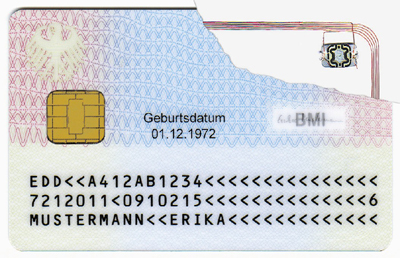

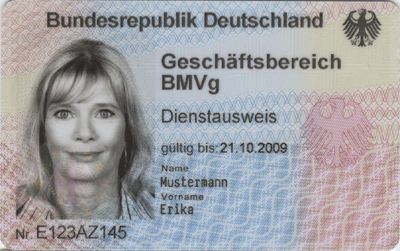
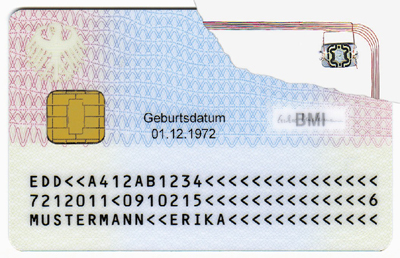



Be the first to comment